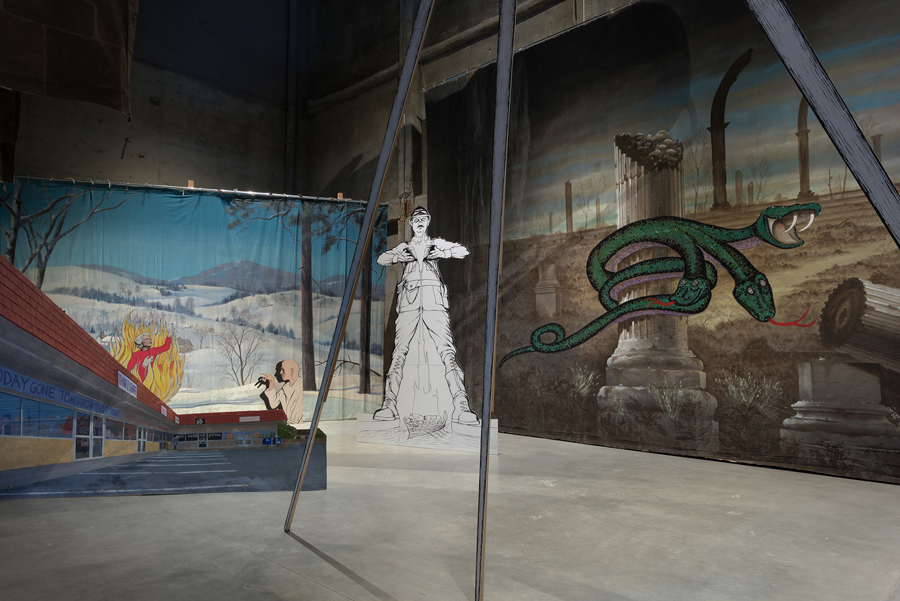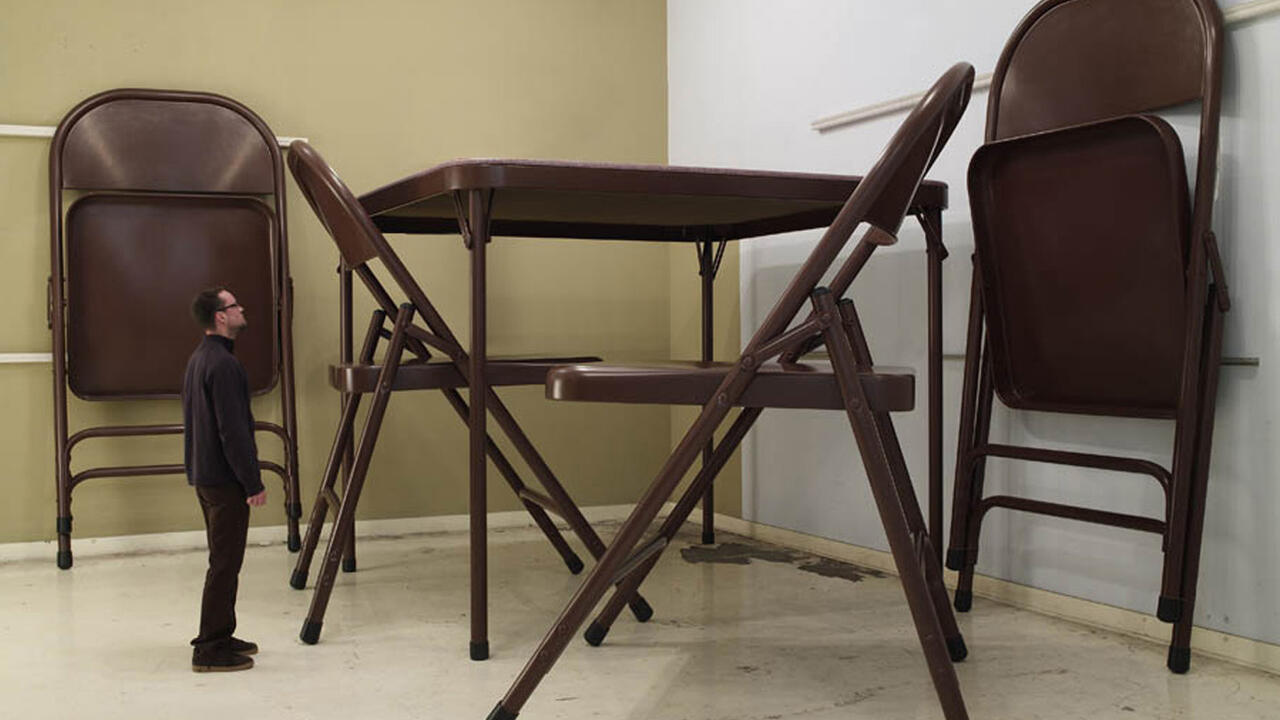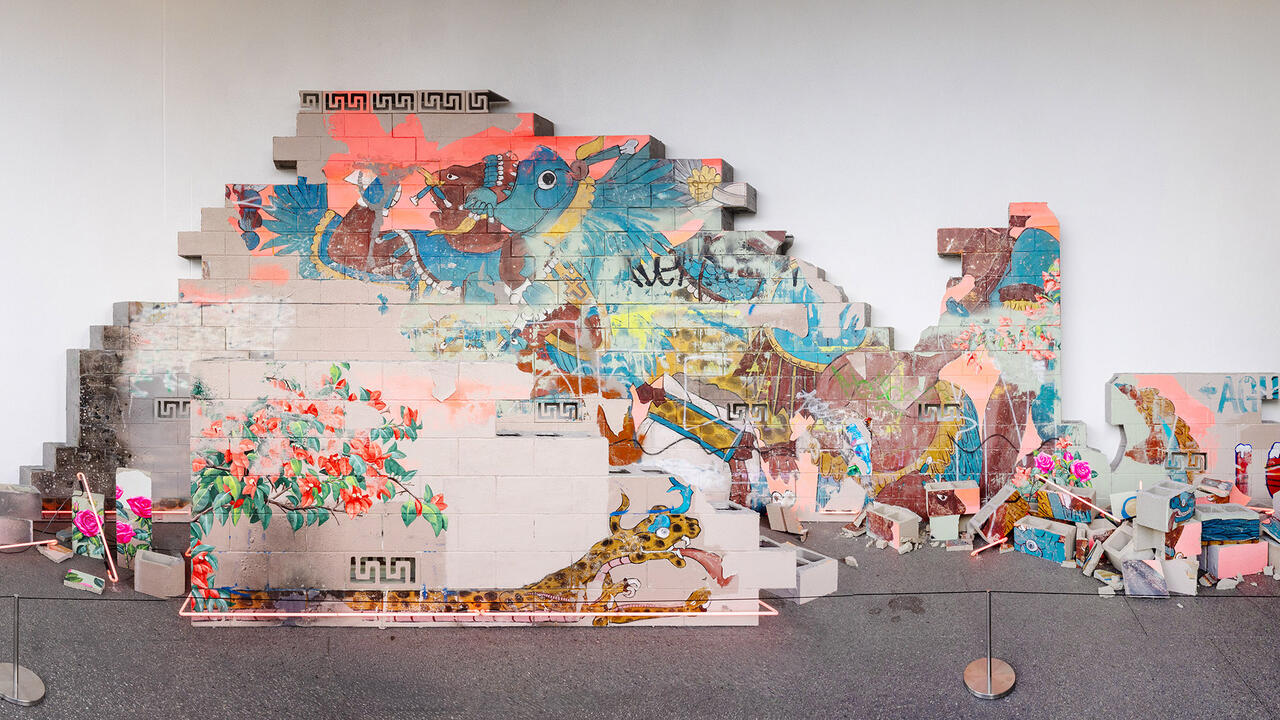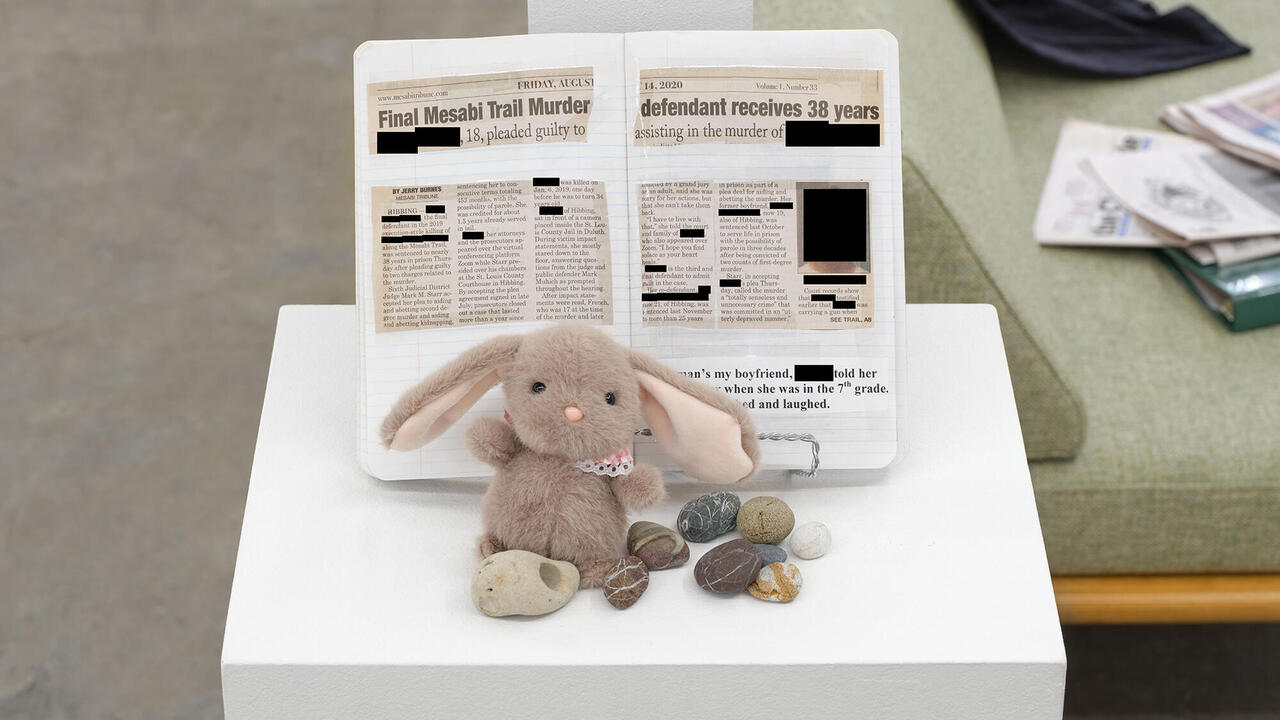Jim Shaw
Marciano Foundation, Los Angeles, USA
Marciano Foundation, Los Angeles, USA

At the dark heart of Jim Shaw’s ‘The Wig Museum’ – an exhibition presented in a former Masonic Temple repurposed by brothers Maurice and Paul Marciano for their private art foundation, and incorporating myriad improbable Masonic artefacts salvaged directly from the bowels of the building – is a story about male ambition, authority, secrecy and repression. The narrative unfurls across a series of found drawings: coursework from ‘The Famous Artist’s Correspondence Course’, which Shaw discovered among his father’s belongings after he died. In red crayon on tracing paper overlays, instructors opine on Shaw Sr.’s drawings of animals, faces and women (lots of women). ‘Heads need to be longer, prettier,’ says one. Typewritten letters, dated 1955 to 1957, critique – in detail – the artist’s technical weaknesses. Apparently, Mark Shaw never gave up his day job doing package design for Dow Chemical.

In Shaw Jr.’s exhibition, however, this story is really about the son, not the father. By most metrics, Shaw has succeeded in becoming the ‘famous artist’ that his father never did, as attested by the scale of this impressive survey as well as recent surveys at the Massachusetts Museum of Contemporary Art, in 2015, and the New Museum, New York, in 2016. The titles of those exhibitions were ‘Entertaining Doubts’ and ‘The End is Here’, respectively; it seems Shaw’s measure of success has not exempted him from anxiety, neurosis, regret and self-doubt, which riddle the 64-year-old artist’s work now more than ever. A painting on a found theatre backdrop depicting a pretty clapboard house is titled Seven Deadly Sins (2013). Over the faded background Shaw has painted adaptations of seven iconic history paintings, including Jacques-Louis David’s The Death of Marat (1793); in Marat’s hand is a self-excoriating to-do list: ‘Find more iconic history paintings to use… Xerox more stuff. Get assistants to trace found images… Have more dreams.’

Assignments my father did for Famous Artist School mail-in-correspondence course with teacher corrections (c.1950) – as the found drawing installation appears in the checklist – has been arranged around a mural-scale picture of Superman’s groin. Shaw has written about Superman’s thick waist, a design feature that renders him (in Shaw’s reading) a middle-aged dad figure fretting about Kryptonite-induced impotence. As viewers approach Superman’s giant black underpants, they discover that the seemingly solid shape is in fact a cutaway, behind which coloured plastic Kryptonite glows ominously.
While some of ‘The Wig Museum’ is familiar fare for Shaw-watchers, what grants it fresh pertinence is its situation inside the magnificent former Scottish Rite Masonic Temple. In the Scottish Rite tradition, teachings and rituals take the form of plays, so at the centre of the temple was a 2000-seat theatre. After the building was purchased by the Marciano brothers, much of the scenery, costumes and other ephemera was abandoned by the Masons, and Shaw, who has appropriated theatrical backdrops since around 2004, put some of it to use.

Shaw’s centrepiece is an awesome Masonic backdrop depicting hell, replete with dragons, serpents, and naked, flailing bodies tumbling into the fiery depths – which, for added effect, he has lit with coloured lights. Nearby stands a plywood cut-out of a bejewelled shopping trolley, a scrim painted with a row of fancy shops, and The Wig Museum (2017) itself: a display structure convening rescued Masonic wigs alongside outlandish wigs created by Shaw. Despite their absurdity, wigs have historically been symbols of European authority and control. As with so much of Shaw’s work, the found material is so unbelievable that it blends effortlessly with the imagery pulled directly from his subconscious. To try to tease the fictional from the real is to miss the point of Shaw’s work: fiction and fantasy have every bit as much influence on economic and social power structures and sacred belief systems as any so-called reality, as this glimpse behind the curtain shrouding a secret brotherhood reveals.
Main image: Jim Shaw, ‘The Wig Museum’, 2017, installation view, Marciano Art Foundation. Courtesy: the artist and Marciano Art Foundation, Los Angeles; photograph: Roberts Wedemeyer























